Founded by Tsar Peter the Great of Russia on 27th May 1703, the city of Saint Petersburg is synonymous with the birth of the Russian Empire and the country’s rise as a great European Power. Known as the cultural capital of Russia, Saint Petersburg was the capital from 1713 until 1917.
The city stands on the River Neva and the Baltic Sea, at the head of the Gulf of Finland, and is today the second-largest city in Russia. Thanks to its status, the city was home to the Russian Imperial family and the country’s nobility, many of whom built lavish palaces throughout Saint Petersburg.
Despite a great many of these structures being badly damaged by German forces in World War Two, post-war restoration efforts have succeeded in saving these incredible buildings, and they largely remain open to the public today.
10 Palaces to Visit in St. Petersburg
Catherine Palace
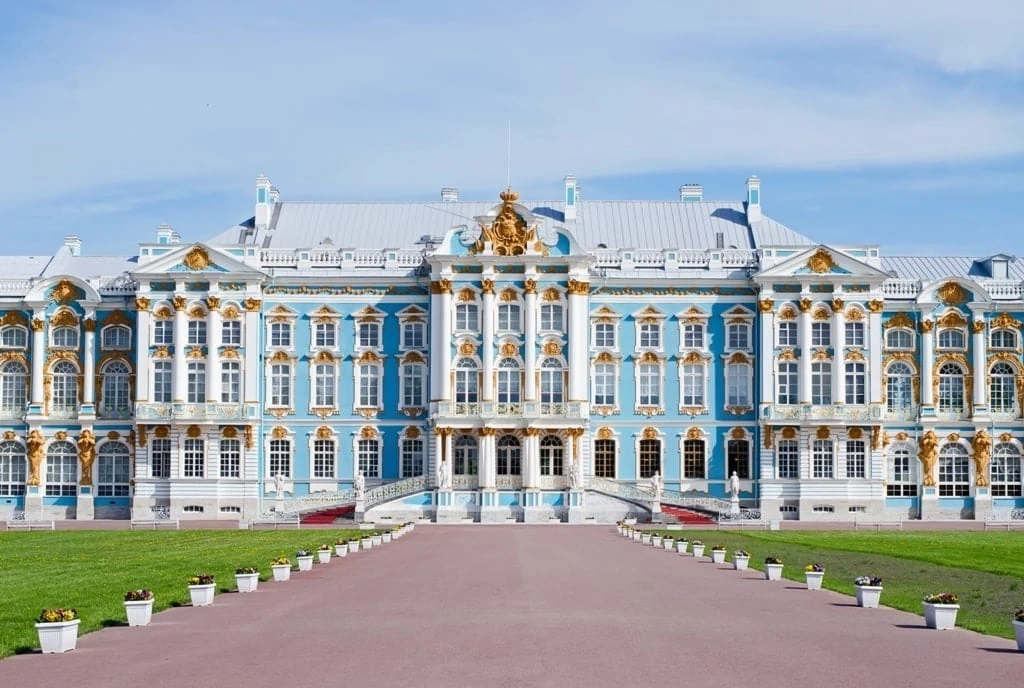
Used as the summer residence of the Russian Tsars, the Catherine Palace was a grand structure built in Rococo, a highly elaborate architectural style characterised by asymmetry, curves, gilding, frescoes, pastel colours and sculpted moulding.
The Catherine Palace stands in the town of Tsarskoye Selo, located 30 kilometres south of St Petersburg. The site was taken during the Great Northern War, and in 1723 Peter the Great’s wife Catherine I had a stone palace built there.
During the reign of Empress Elizabeth work began on a new palace, which expanded the existing structure to be 300 metres long with a main house, two side wings, chapel, conservatory hall and four galleries with hanging gardens.

In 1751 the palace was given its distinctive blue exterior with white columns, gilded stucco and golden sculptures. In the 1770s the palace underwent some neoclassical renovations, including raising the wings from one storey high to four storeys high.
The interior of the palace was enormous, with 40 state apartments and 100 private and service rooms. Much of the interior was lavishly decorated in a variety of styles, including a Chinese room with porcelain and Coromandel lacquer panels and an arabesque room with classical Greek and Roman designs.
Retreating German forces destroyed the palace after the siege of Leningrad in World War Two, but reconstruction efforts began in 1957 to restore the Catherine Palace to its former glory.
You might also like: The best castles to visit in Russia.
Winter Palace – Hermitage Museum
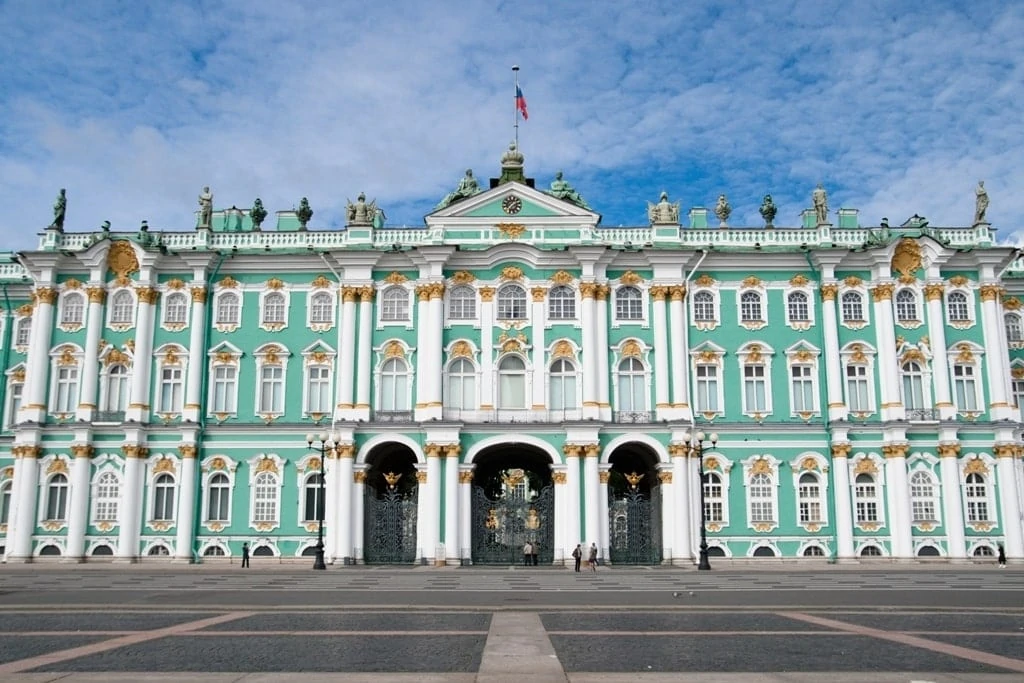
Situated between the Palace Embankment and Palace Square in Saint Petersburg, the Winter Palace (the fourth of its kind) was the residence of the Russian Emperors from 1732 until 1917. An enormous structure, the Winter Palace was intended as a statement of the wealth and power of Imperial Russia and its Tsars.
Designed in Baroque style, the palace is shaped like a long rectangle, with a main façade some 215 metres long and 30 metres high. The exterior is painted green and white, with Baroque stucco work on pediments above façades and windows.
Inside, it contains 1,500 rooms and 117 staircases decorated in a variety of styles, including Rococo, Baroque and Neoclassical – as the Winter Palaces was inhabited by the Tsars for so long, it underwent a number of redecorations.
Not only was the palace used by the Russian imperial family as a residence, but it also later came to be used as a museum when in 1852 the Imperial Hermitage Museum was opened to the public, displaying many of the treasures and artworks that successive rulers had collected.
After the 1917 Russian Revolution, the Winter Palace was briefly used as an administrative building, before being turned into a museum. It remains as a museum today and houses the largest collection of paintings in the world, attracting around 3.5 million visitors every year.
Saint Michael’s Castle
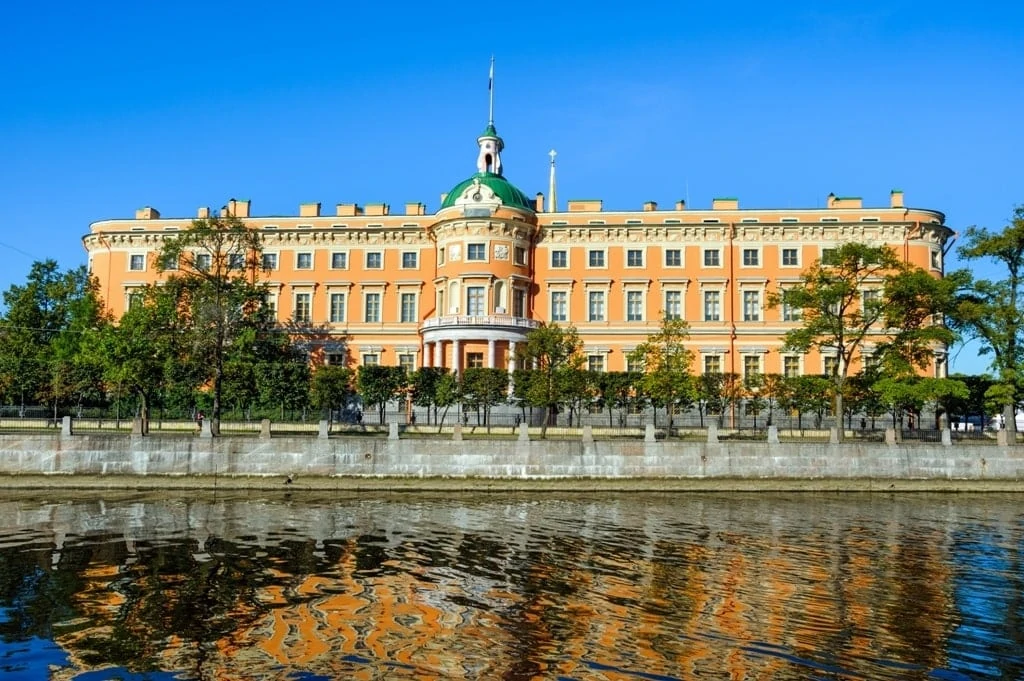
Also known as the Mikhailovsky Castle or the Engineer’s Castle, St. Michael’s Castle was built as a residence for Tsar Paul I from 1797-1801. Standing south of the Summer Garden in St Petersburg, the castle appears different from each side, as each façade was decorated in a different architectural style, including French Classicism, Italian Renaissance and Gothic.
The structure is built around an octagonal courtyard and is surrounded by all sides by water (the Moika and Fontana rivers, as well as two specially dug canals). This is likely in part due to Tsar Paul’s paranoid fear of assassination, and his dislike of the Winter Palace.
In the end, Paul was assassinated in his own bedroom only forty days after the completion of his new residence, on 12th March 1801. After his death, the imperial family moved back into the Winter Palace, and Saint Michael’s Castle became the army’s engineering school, before becoming a branch of the Russian Museum in the 1990s.
Peterhof Palace and Gardens
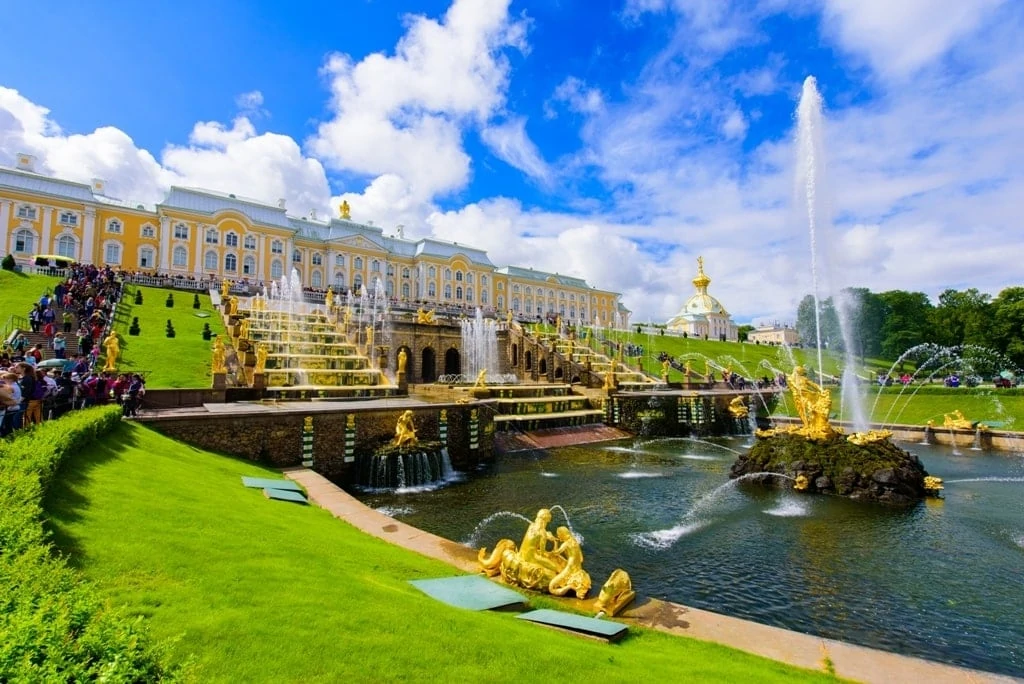
The Peterhof is a large complex of palaces and gardens located in Petergof, on the southern shore of the Gulf of Finland. Built by Peter the Great, the location was originally intended to be used as a country residence, but grew following Peter’s visit to the French royal court at Versailles in 1717 – the
Peterhof was a display of wealth and power constructed to rival the opulence of the French court, leading it to be nicknamed ‘The Russian Versailles’. The palace complex is built around a natural 16-metre-high bluff which stands some 100 metres from the shore.
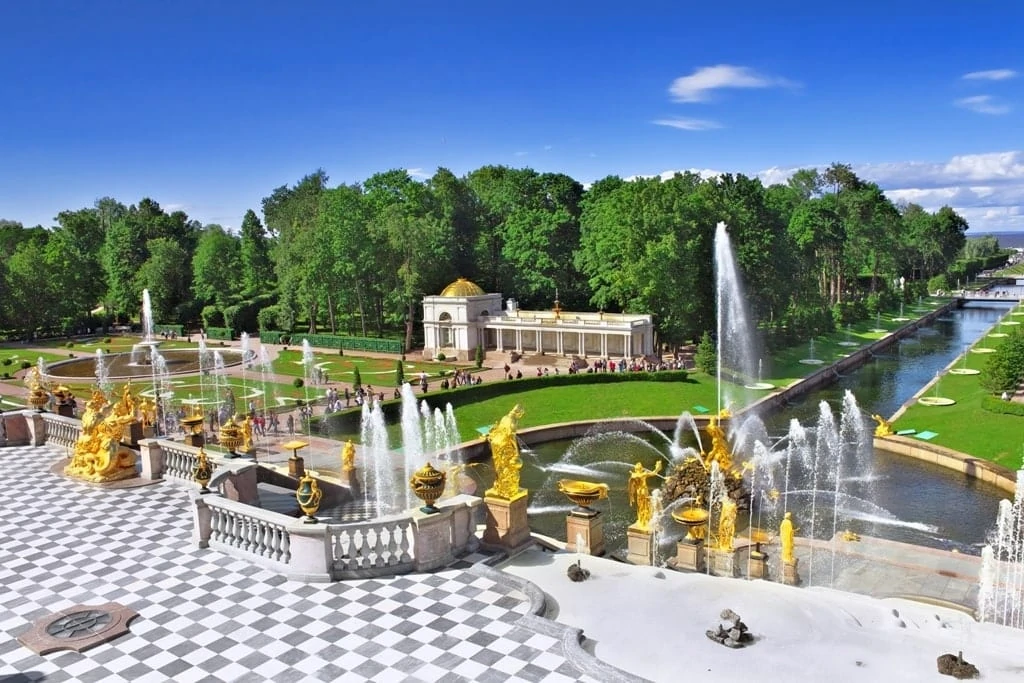
Between the bluff and the shore stretch the lower gardens, along with several smaller palaces and outbuildings, while the Grand Palace, the baroque centrepiece of the Peterhof, stands atop the bluff.
Following the construction of the Peterhof, the gardens were expanded, and wings were added to the Grand Palace, turning it into a more imposing structure.
During the Second World War, the palace was captured by German troops and damaged during the fighting – however, the Peterhof was restored after the war and is now open to visitors.
Belozersky Palace
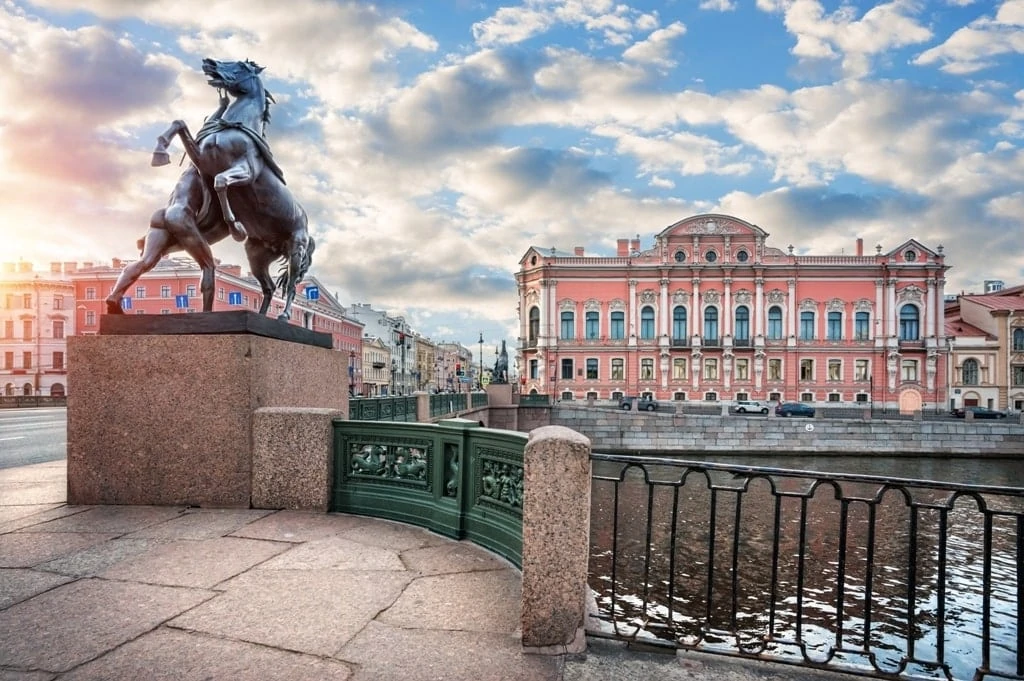
The Beloselsky-Belozersky Palace is a Neoclassical structure standing where the Fontanka River intersects Nevsky Prospect, the main street in Saint Petersburg.
Originally the site of a small French-style palace built in 1747 for Prince Mikhail Andreevich Beloselsky, the structure that can be seen there today was built from 1846-48 by Princess Elena, with the fortune she inherited from her family.
The palace quickly gained a reputation for hosting extremely lavish balls, comparable to the opulent events which took place at the Imperial Winter Palace.
After the revolution of October 1917, the palace was nationalised and later used to house various organisations including the Communist Party of Kuibyshevsky District, and more recently the office of the President of the Russian Federation.
Yusupov Palace
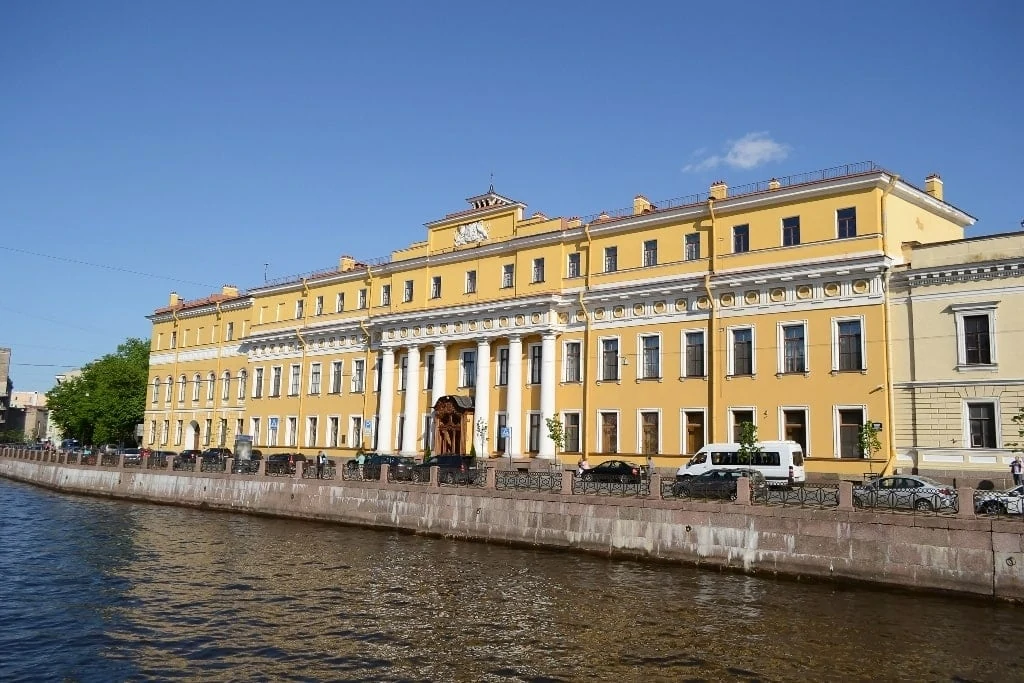
Also known as the Moika Palace, this structure which stands on the banks of the Moika river in Saint Petersburg, was the primary residence of the House of Yusupov, a Russian noble family.
Initially constructed in 1776 by French architect Jean-Baptiste Vallin de la Mothe, the building displays many architectural influences. In the 1830s the Yusupov family purchased the palace and renovated it, lavishly decorating the interior and filling it with their large collection of art (which numbered some 40,000 pieces).
On 30th September 1916, the palace was the site of Grigori Rasputin’s assassination by a monarchist group whose membership included Prince Felix Yusupov.
Following the 1917 revolution the palace was given to the education commissariat of St Petersburg, who turned it into a museum – part of the palace remains open to the public to this day.
Stroganov Palace
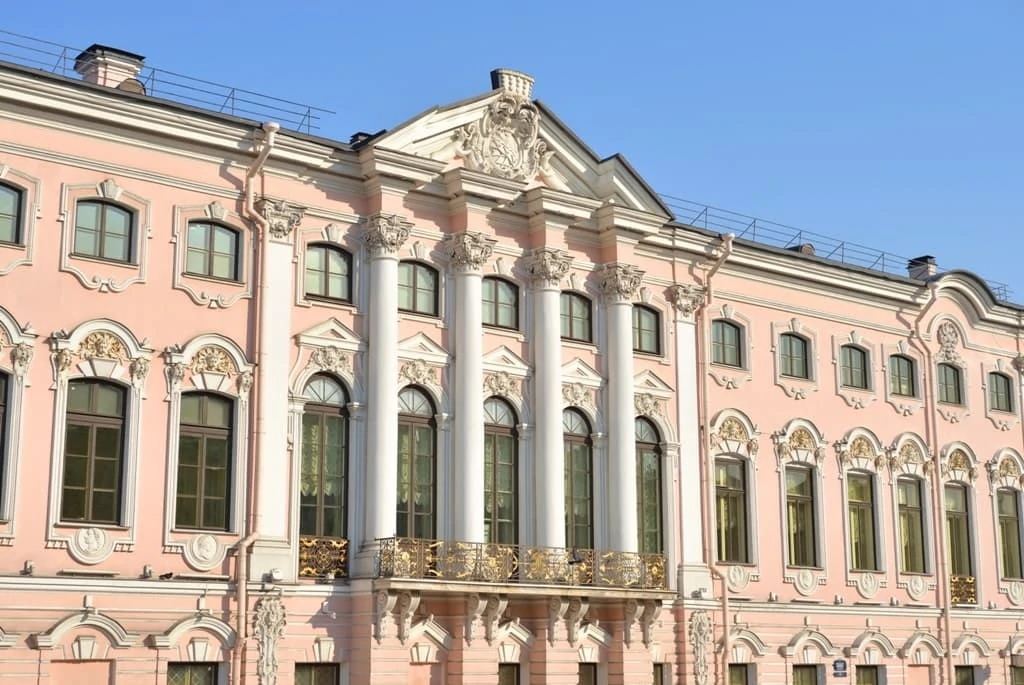
Built for Baron Sergei Grigoriyevich Stroganov in 1753–1754, the Stroganov Palace is a late baroque palace at the intersection of the Moika River and Nevsky Prospect. Baron Sergei’s palace replaced an earlier, smaller Stroganov palace which was probably built in the 1720s – Baron Sergei commissioned Italian Bartolomeo Rastrelli, who had been working on the Catherine Palace, to design the structure.
The interior of the palace was sumptuously decorated to reflect the great wealth of the Stroganovs (they were the richest family in Russia at the time). In the 1790s and early 1800s, the interior rooms were redecorated in Neoclassical style.
Following the Russian Revolution, the Stroganov family fled Russia and their palace in Saint Petersburg was seized. For a time, the palace served as a museum of the Russian nobility, before being handed over to the Ministry of Shipbuilding in 1939.
In 1988 the building was given to the Russian Museum and now hosts some of its exhibitions. Since the 1990s restoration efforts have been ongoing, slowly recreating the Stroganov Palace.
Menshikov Palace
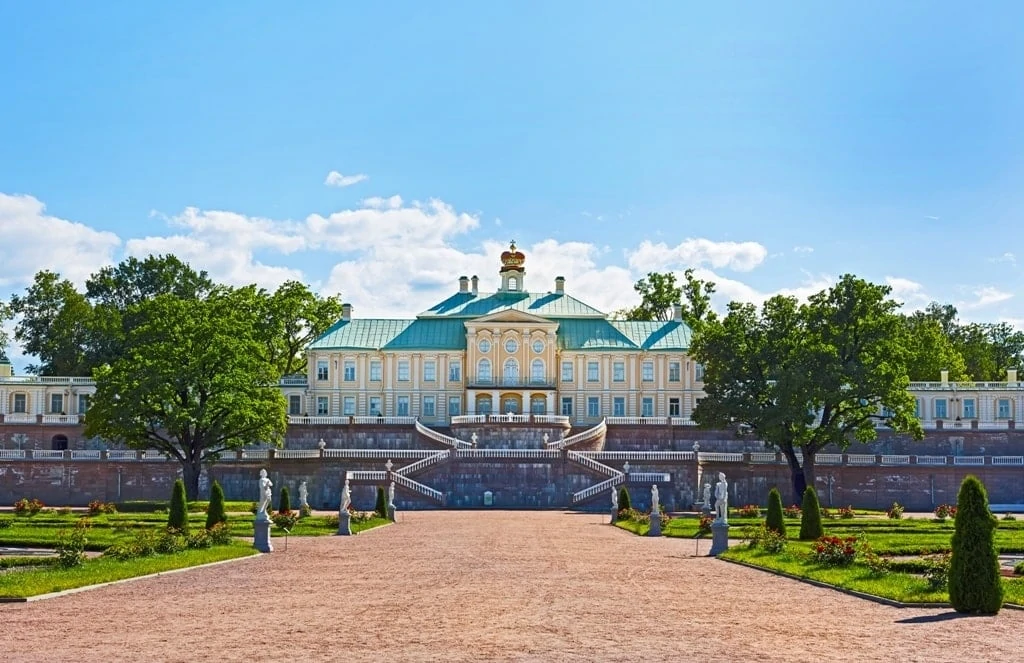
The first large stone building constructed in the city of Saint Petersburg, the Menshikov Palace is a Baroque structure on the Universitetskaya Embankment of Vasilyevsky Island. Founded in 1710 for the Governor-General of Saint Petersburg, Alexander Menshikov, building work on the palace continued until 1727 when Menshikov was exiled to Siberia.
In 1731 the building was granted to the First Cadet Corps and became a military academy, before becoming a museum of the Corps in the late 1800s. In 1924 the contents of the museum were moved to the Hermitage, and from 1957-81 the building was restored before reopening as a branch of the Hermitage museum.
Pavlovsk Palace
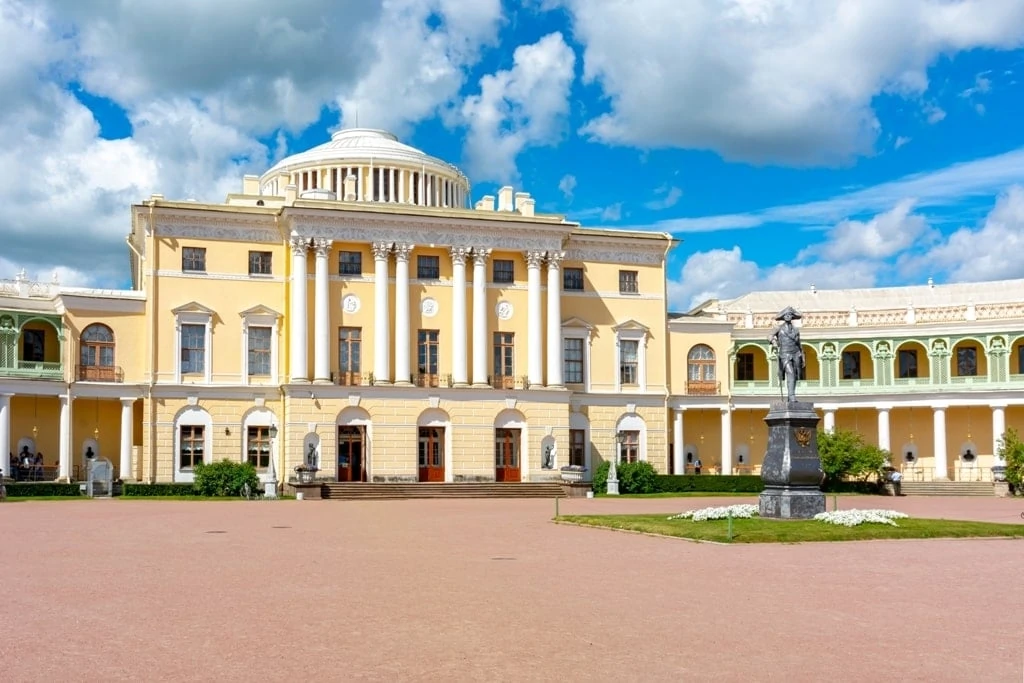
Built in the late 18th century by Catherine the Great for her son Grand Duke Paul, Pavlovsk Palace is situated within the municipal town of Pavlovsk in Saint Petersburg.
Originally the Scottish-born architect Charles Cameron was tasked with constructing the new palace, but after he fell out with Paul and his wife Maria Feodorovna over his simple Palladian designs, he left the project and was replaced by his assistant Vincenzo Brenna.
Brenna made the building far more imposing with the addition of two large sweeping wings which created an almost circular structure. He went on to become Paul’s favourite architect, later constructing St. Michael’s Castle for the Tsar.
Inside the palace was elaborately decorated in a variety of European styles likely inspired by Paul and Maria’s travels, including an Italian Hall, a Grecian Hall and an Egyptian Vestibule.
Following the 1917 Revolution, the palace was saved as a museum, before being burned by German troops in World War Two. Post-war restoration work was completed in the 1970s, largely returning Pavlovsk Palace to its former condition.
Gatchina Palace

Gatchina Palace, also known as the Great Gatchina Palace, is a grand structure in the Leningrad Oblast, just south of Saint Petersburg. Built by Catherine the Great for her favourite Count Grigori Grigoryevich Orlov, Gatchina stands on a hill next to Lake Serebryany.
Combining classical architecture and elements of medieval castle architecture, the palace also featured highly decorative interiors and was completed in 1781.
After Orlov’s death in 1783, Catherine re-purchased the palace from the Count’s heirs, and it remained in the Imperial family until the Russian Revolution in 1917.
During the Russian Civil War Gatchina was used as a headquarters by the anti-communist Whites, before being converted into a museum during the Soviet period.
During the Second World War, the palace was destroyed by a fire lit by retreating German forces, and a long period of post-war reconstruction began immediately afterwards. These efforts are still ongoing to this day, having been hampered by economic downturns recently.
